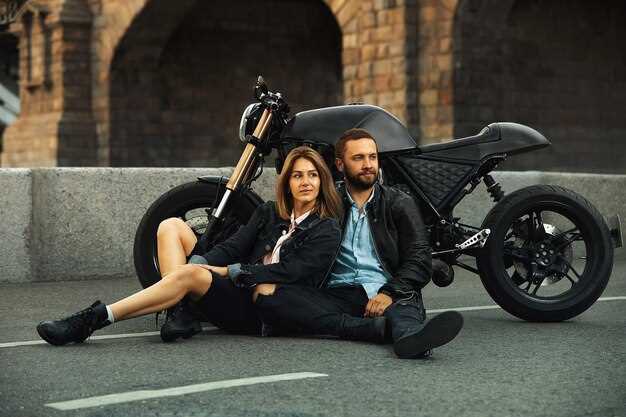
When it comes to American motorcycles, few names resonate as strongly as Harley-Davidson and Indian. Both brands have storied histories, iconic designs, and passionate followings, making the choice between them a significant decision for any rider. As you delve into the world of cruising, touring, and performance, understanding the distinct characteristics and offerings of each brand will empower you to make an informed choice.
Harley-Davidson has long been synonymous with the freedom of the open road, boasting a wide range of models that cater to various riding styles and preferences. From the classic Softail to the sleek Sportster, the brand has continuously innovated while staying true to its heritage. Riders often celebrate the unmistakable roar of a Harley-Davidson engine, which is a crucial part of the brand’s allure.
On the other hand, Indian Motorcycles represents a blend of tradition and modern technology. With roots dating back to 1901, Indian has re-emerged in recent years, offering motorcycles that not only pay homage to their classic designs but also incorporate advanced features and performance enhancements. Riders looking for a distinctive style coupled with modern functionality may find Indian to be an attractive alternative.
In the following sections, we will explore the key differences between Harley-Davidson and Indian motorcycles, examining performance, comfort, design, and community. By the end of this comparison, you’ll be better equipped to choose the motorcycle that not only meets your performance needs but also fits your personal style and riding philosophy.
Harley-Davidson vs Indian: Choosing the Right Motorcycle

When it comes to iconic American motorcycle brands, few can rival the prestige and heritage of Harley-Davidson and Indian. Both manufacturers offer a unique riding experience, appealing to different preferences among enthusiasts. Understanding the key differences can facilitate a more informed choice.
Harley-Davidson is renowned for its classic cruisers that embody a rebellious spirit. Models like the Street Glide and Road King are designed for long-distance touring with a focus on comfort. The deep, rumbling V-twin engine delivers a signature sound that is unmistakably Harley, creating a sense of camaraderie among riders.
On the other hand, Indian Motorcycles have made a strong resurgence in recent years, emphasizing a blend of heritage and modern technology. The Indian Chief and Scout lines offer a more contemporary design while still paying homage to their historical roots. Riders often appreciate the smooth performance and innovative features like advanced ride assistance, which enhance safety and comfort.
Another element to consider is customization. Harley-Davidson has a vast array of aftermarket parts and accessories, allowing owners to personalize their bikes extensively. Indian also offers custom options, but the selection is often perceived as less extensive compared to Harley-Davidson.
Test rides can be invaluable. Whether choosing a Harley-Davidson or an Indian model, experiencing the ride firsthand helps in understanding the handling, comfort, and fit. Each brand has distinct ergonomics, so personal preference plays a significant role in the decision-making process.
Ultimately, the choice between Harley-Davidson and Indian comes down to individual rider preference, lifestyle, and intended use. Both brands have a loyal following and offer high-quality motorcycles, ensuring that whichever you choose, you’ll be part of a rich motorcycling tradition.
Performance Comparison: Engine Power and Handling
The performance of a motorcycle is often defined by its engine power and handling capabilities. When comparing Harley-Davidson and Indian, both brands offer distinct characteristics that cater to different riding styles and preferences.
Harley-Davidson motorcycles are renowned for their strong V-twin engines, typically delivering a rich torque curve that provides an exhilarating experience at lower RPMs. This engine configuration results in a unique riding experience characterized by a powerful pull, especially suited for cruising and long-distance rides. The iconic sound of a Harley-Davidson engine adds to its charm, making it a popular choice among enthusiasts who appreciate the cultural heritage of the brand.
On the other hand, Indian motorcycles have also made significant strides in engine performance. With modern powertrains that focus on balance and horsepower, Indian’s offerings, such as the Thunder Stroke and PowerPlus engines, provide impressive power outputs while maintaining smooth, manageable handling. The focus on advanced engineering allows Indian bikes to compete directly with Harley-Davidson in terms of performance metrics.
Handling is another critical aspect where both manufacturers have their strengths. Harley-Davidson motorcycles are designed with a heavier frame, which can enhance stability but may affect maneuverability at lower speeds. Riders who prefer cruising or touring may find this design advantageous, as it provides a sense of security on the road.
Conversely, Indian motorcycles often emphasize agility and responsiveness. Their lighter chassis and optimized suspension systems result in better cornering capabilities and an overall engaging ride. Riders looking for a sportier feel may find Indian motorcycles more appealing due to their design, which facilitates easier handling in various riding conditions.
Ultimately, the decision between Harley-Davidson and Indian comes down to personal preference in engine power and handling characteristics. Both brands offer exceptional motorcycles that cater to different priorities, whether it’s the classic torque and stability of Harley-Davidson or the modern agility and power of Indian.
Design Choices: Customization Options and Visual Appeal
When comparing Harley-Davidson and Indian motorcycles, one of the most significant aspects that enthusiasts consider is the design and customization options available. Both brands have rich histories and iconic designs, but they offer different experiences in terms of visual appeal and personalization.
Indian motorcycles are often celebrated for their classic and timeless aesthetics, which exude a sense of heritage and craftsmanship. The brand’s attention to detail can be observed in the intricate designs on the tank, fenders, and overall shape of the bikes. Indian’s use of quality materials and finishes enhances their visual appeal, making them stand out on the road.
Customization options with Indian are extensive, allowing riders to tailor their motorcycles to reflect personal style. From custom paint jobs to unique seat designs, Indian provides various ways to make a motorcycle truly one-of-a-kind. The availability of aftermarket parts also broadens the possibilities for enhancing the bike’s look and performance.
On the other hand, Harley-Davidson is renowned for its robust and rebellious designs. The brand emphasizes a rugged aesthetic that resonates with the spirit of the open road. Harley models often feature muscular silhouettes and attention-grabbing details, appealing to those who appreciate a bold and aggressive look.
Harley also offers a broad spectrum of customization options, enabling riders to modify everything from the handlebars to the exhaust systems. The Harley community values individuality, leading to a vast marketplace for custom parts and accessories. This allows owners to create a motorcycle that not only looks great but also reflects their personality and riding style.
In conclusion, both Indian and Harley-Davidson present unique design choices and customization options that cater to diverse tastes. Whether you prefer the classic elegance of Indian or the rugged vibe of Harley, both brands offer plenty of opportunities to create a visually appealing motorcycle that stands apart from the crowd.
Cost Analysis: Pricing, Maintenance, and Resale Value

When considering the purchase of a motorcycle, particularly a heavyweight like Harley-Davidson or Indian, cost implications play a significant role in the decision process. This analysis will cover initial pricing, maintenance costs, and potential resale values for both brands.
Pricing Comparison
Initial costs can vary significantly between Harley-Davidson and Indian motorcycles. An essential aspect of this comparison includes:
- Base Model Prices: Harley-Davidson motorcycles generally have a wider range of base models starting around $7,000. Indian motorcycles tend to start at a slightly higher entry point, around $11,000 for some popular models.
- Top-Line Models: Premium Harley models can reach upwards of $45,000, while high-end Indian models tend to max out at approximately $38,000.
- Customization Options: Both brands offer various customization options, which can significantly affect the final price. Indian is known for offering some packages that are more competitively priced than Harley’s extensive add-ons.
Maintenance Costs
Maintaining a motorcycle is crucial for longevity and performance. Here’s a breakdown of potential maintenance costs:
- Routine Maintenance: Harley-Davidson owners typically spend about $800 to $1,200 annually on maintenance. Indian owners might spend slightly less, around $700 to $1,000, depending on usage.
- Parts Availability: Parts for Harley-Davidson motorcycles are widely available, which can mean lower costs for repairs. Indian parts can be slightly more expensive and may take longer to source, impacting overall maintenance costs.
- Service Frequency: Both brands require similar service intervals, although Harley’s extensive dealer network may make it easier to access service options.
Resale Value
Resale value is a critical factor for many motorcycle buyers as it impacts the total investment. Consider the following:
- Depreciation Rates: Harley-Davidson motorcycles typically have slower depreciation rates, with many models retaining value well over the first five years compared to Indian motorcycles which may depreciate faster due to their newer market presence.
- Market Demand: Harley-Davidson has a strong brand loyalty and a consistent following, which can enhance resale prospects. Indian, while rapidly gaining popularity, still may not match the resale value retention of Harley models.
- Selling Platforms: The availability of platforms for selling used bikes can also influence resale value. Harley-Davidson has a vast network of enthusiasts, which can facilitate quicker sales at competitive prices.
In summary, the cost analysis of choosing between Harley-Davidson and Indian motorcycles reveals distinct advantages and disadvantages in pricing, maintenance, and resale value. Prospective buyers should thoroughly evaluate these factors in relation to their personal preferences and budget before making a purchase.




